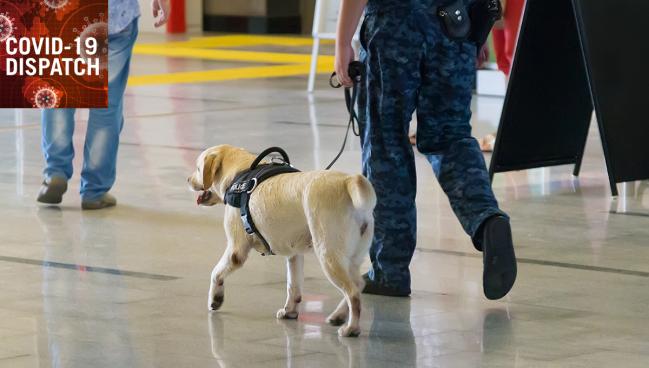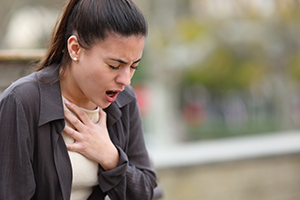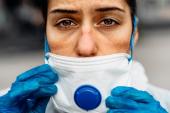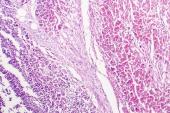COVID-19: TCTMD’s Dispatch for May Week 3
We’re curating a list of COVID-19 research and other useful content, and updating it regularly.

Since March 2020, TCTMD reporter Todd Neale has been writing up breaking news and peer-reviewed research related to COVID-19 every weekday. In July 2021, we transitioned to Mondays, Wednesdays, and Fridays. If you have something to share, tell us. All of our COVID-19 coverage can be found on our COVID-19 Hub.
May 20, 2022
 The estimated number of COVID-19 cases in North Korea is approaching 2 million just a week after the country—which has an unvaccinated population—admitted it had an outbreak, the Associated Press reports. The story notes that “the outbreak could be worse than officially reported since the country lacks virus tests and other healthcare resources and may be underreporting deaths to soften the political impact on authoritarian leader Kim Jong Un.”
The estimated number of COVID-19 cases in North Korea is approaching 2 million just a week after the country—which has an unvaccinated population—admitted it had an outbreak, the Associated Press reports. The story notes that “the outbreak could be worse than officially reported since the country lacks virus tests and other healthcare resources and may be underreporting deaths to soften the political impact on authoritarian leader Kim Jong Un.”
Shanghai, China, continues to emerge from its latest round of lockdowns, with plans to reopen four of its 20 subway lines on Sunday (Associated Press). Also restarting will be 273 bus lines that connect major urban centers, airports, train stations, and hospitals. “The lockdown of China’s largest city”—done as part of a “zero COVID” strategy—“has dealt a blow to the economy and frustrated residents, particularly as many countries elsewhere in the world move away from such harsh measures as they try to live with the virus.”
COVID-19 cases are rising in several parts of the world, with a weekly update from the World Health Organization (WHO) showing increasing infections in the Eastern Mediterranean, Western Pacific, Americas, and African regions (CIDRAP News). WHO officials are warning health systems in the Americas to prepare for surges (New York Times). An official said there are over 27% more cases in the region, driven by increases in the US. On Wednesday, federal officials said one-third of Americans live in areas where spread of the virus is so high that they should consider wearing a mask indoors.
As COVID-19 numbers continue to rise across the United States, the Centers for Disease Control and Prevention (CDC), decided yesterday to recommend booster doses of the Pfizer/BioNTech vaccine in children ages 5 to 11 (New York Times). The US Food and Drug Administration (FDA) authorized that use earlier in the week.
 On Monday, the FDA declined to authorize fluvoxamine, a generic antidepressant, as a treatment for COVID-19, STAT reports. In a two-page summary, the agency said a group of doctors that has been advocating for use of the drug failed to prove that it was effective. FDA reviewers note that in one particular trial, “the treatment benefit of fluvoxamine was not persuasive when focusing on clinically meaningful outcomes such as proportion of patients experiencing hospitalizations or hospitalizations and deaths.”
On Monday, the FDA declined to authorize fluvoxamine, a generic antidepressant, as a treatment for COVID-19, STAT reports. In a two-page summary, the agency said a group of doctors that has been advocating for use of the drug failed to prove that it was effective. FDA reviewers note that in one particular trial, “the treatment benefit of fluvoxamine was not persuasive when focusing on clinically meaningful outcomes such as proportion of patients experiencing hospitalizations or hospitalizations and deaths.”
Children and teens with congenital and acquired cardiovascular conditions are particularly susceptible to severe COVID-19 outcomes, according to a study in JAMA Network Open. Cardiac arrest, cardiogenic shock, heart surgery, cardiopulmonary disease, heart failure, hypotension, nontraumatic cerebral hemorrhage, pericarditis, and biventricular defects all were associated with increased COVID-19 severity. CIDRAP News provides more details.
More than three-quarters of patients with long COVID were not hospitalized for the initial infection, according to a report from FAIR Health based on private insurance claims. “The new study adds to a growing body of evidence that, while patients who have been hospitalized are at greater risk for long COVID, people with mild or moderate initial coronavirus infections—who make up the vast majority of coronavirus patients—can still experience debilitating post-COVID symptoms including breathing problems, extreme fatigue, and cognitive and memory issues,” a story in the New York Times notes.
A UK study published in the BMJ suggests that receipt of a COVID-19 vaccine after testing positive for SARS-CoV-2 may prevent long COVID symptoms, with sustained improvement after a second dose, although the researchers say longer follow-up is necessary. And an accompanying editorial notes that “a clear explanation for how vaccines might reduce the multisystem manifestations of long COVID is still lacking.” Here’s more from STAT.
In an explainer video, STAT’s Helen Branswell explores why there isn’t a nasal vaccine for COVID-19 yet. “If we want to prevent mild COVID infections, we’re going to need vaccines that protect us where infections start: in the mucus membranes of the nose, mouth, and throat. And for that, we’re likely going to need intranasal vaccines,” Branswell says, noting that “the development process is tricky.”
 New data published this week in BMJ Public Health affirm that specially trained dogs can accurately sniff out COVID-19 among travelers passing through an airport. “One of our findings highlights the importance of continuous retraining as new variants emerge,” the researchers say, adding that “using scent dogs may present a valuable approach for high-throughput, rapid screening of large numbers of people.” CIDRAP News provides more details.
New data published this week in BMJ Public Health affirm that specially trained dogs can accurately sniff out COVID-19 among travelers passing through an airport. “One of our findings highlights the importance of continuous retraining as new variants emerge,” the researchers say, adding that “using scent dogs may present a valuable approach for high-throughput, rapid screening of large numbers of people.” CIDRAP News provides more details.
May 16, 2022
New Zealand Prime Minister Jacinda Ardern has tested positive for COVID-19, joining other members of her family, the Associated Press reported late last week. Ardern, who is fully vaccinated, said she still plans to travel to the United States later this month to discuss trade and give a commencement address at Harvard University.
 Authorities in Shanghai, China, says its lockdown meant to stem a recent outbreak of SARS-CoV-2 will start easing, the Associated Press reports. Fewer than 1 million people in the city of more than 26 million remain under strict lockdown, and the vice mayor said 15 of 16 districts in Shanghai had eliminated virus transmission.
Authorities in Shanghai, China, says its lockdown meant to stem a recent outbreak of SARS-CoV-2 will start easing, the Associated Press reports. Fewer than 1 million people in the city of more than 26 million remain under strict lockdown, and the vice mayor said 15 of 16 districts in Shanghai had eliminated virus transmission.
Readmission after a prior hospitalization for severe COVID-19 is common, investigators write in the CMAJ. Relatively little attention has been paid to readmission rates, the authors say, and while these appear similar to those following discharge for other medication conditions, more research is needed to understand postacute COVID symptoms and outcomes.
In a randomized trial, prone positioning did not significantly boost outcomes over usual care among adults with COVID-19 and acute hypoxemia. There were no differences between groups in terms of endotracheal intubation within 30 days (primary outcome), mortality at 60 days, or other events, although the researchers note in JAMA that “the effect size for the primary study outcome was imprecise and does not exclude a clinically important benefit.”
Among immunosuppressed patients, two doses of the COVID-19 vaccine from Moderna result in stronger seroresponses than two doses of the Pfizer/BioNTech shot, according to a study in JAMA Network Open. “These findings suggest that choice of mRNA vaccine platform is important in optimizing immune responses to SARS-CoV-2 vaccination and can help inform strategies for booster doses in high-risk, immunosuppressed populations,” the researchers write.
 With help from the government, US hospitals fared well financially during the first year of the pandemic, according to an analysis in JAMA Health Forum. Though operating margins were substantially reduced, overall profit margins were similar to those in prior years, with government, rural, and smaller hospitals having even higher profit margins. The findings suggest “that the COVID-19 relief fund effectively offset the financial losses for hospitals during the COVID-19 pandemic.” CIDRAP News has more.
With help from the government, US hospitals fared well financially during the first year of the pandemic, according to an analysis in JAMA Health Forum. Though operating margins were substantially reduced, overall profit margins were similar to those in prior years, with government, rural, and smaller hospitals having even higher profit margins. The findings suggest “that the COVID-19 relief fund effectively offset the financial losses for hospitals during the COVID-19 pandemic.” CIDRAP News has more.
Two other studies in JAMA focus on the pediatric population. One shows that during a period of dominance for the Omicron variant, estimated vaccine effectiveness for two doses of the Pfizer/BioNTech shot was “modest and decreased rapidly,” although a booster dose increased it. The other demonstrates that unvaccinated children and teens had greater risks of infection and hospitalization compared with their vaccinated peers, with declining risk as Omicron became more prevalent. “The encouraging message should be that although vaccine protection for children and adolescents was lower in the Omicron era than with previous variants and that such protection wanes rapidly, vaccine effectiveness against hospitalization remains high and booster doses confer additional protection,” an editorial states.
The Omicron variant is more likely than prior strains to cause croup in children, researchers report in Pediatrics. Of the 75 children admitted to Boston Children’s Hospital with COVID-associated croup through the middle of January 2022, 81% were during the period of Omicron dominance. Most were male (72%) and discharged from the emergency department (88%). The “preliminary findings lend compelling evidence to the hypothesis that the Omicron variant causes laryngotracheobronchitis,” the authors say. CIDRAP News has more details.
 Asthma + Lung UK reports a doubling in the number of people looking for help with long COVID symptoms over the last 6 months, with about 500,000 visiting its website or calling its helpline over that span, according to Bloomberg. The charity’s chief executive said: “As we near the grim milestone of 2 million people living with long COVID, there is still a dismal lack of treatments for this disabling condition, which is leaving people fighting for breath and devastating every aspect of their life, health, work, and relationships.”
Asthma + Lung UK reports a doubling in the number of people looking for help with long COVID symptoms over the last 6 months, with about 500,000 visiting its website or calling its helpline over that span, according to Bloomberg. The charity’s chief executive said: “As we near the grim milestone of 2 million people living with long COVID, there is still a dismal lack of treatments for this disabling condition, which is leaving people fighting for breath and devastating every aspect of their life, health, work, and relationships.”
Todd Neale is the Associate News Editor for TCTMD and a Senior Medical Journalist. He got his start in journalism at …
Read Full Bio





Comments